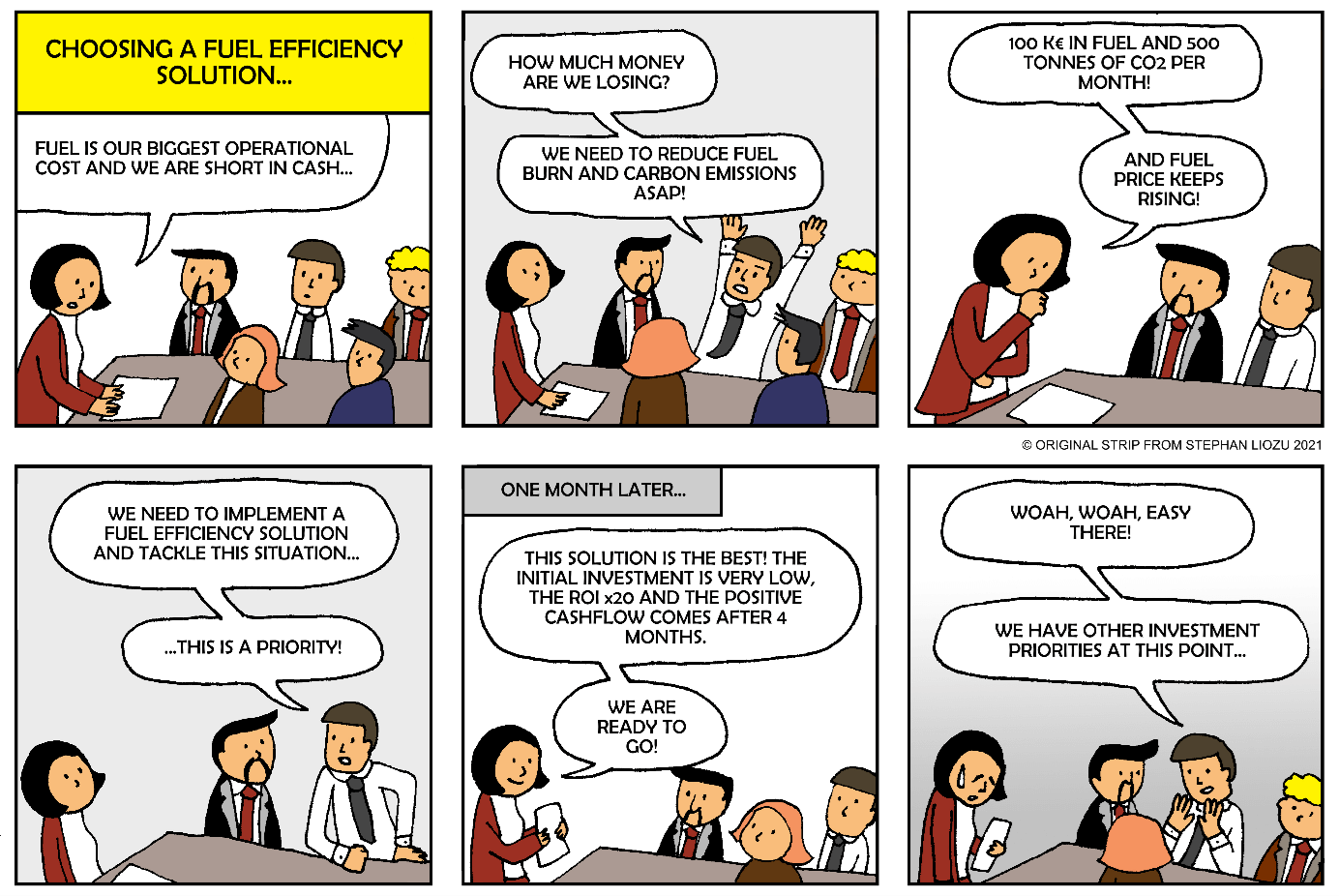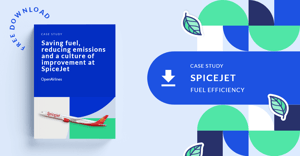6 mistakes to avoid when choosing an aircraft fuel efficiency solution
When the idea of launching a fuel efficiency project within your airline first comes up, you may ask yourself many questions. What if I choose the wrong solution? What if the implementation takes too much time? How can I make sure everyone contributes? What if it is too expensive and does not deliver the expected benefits?
All these questions are completely legit and denote your willingness to move forward, which means your airline will soon be operating in a greener and more sustainable way while reducing costs. That is positively a good thing!
Do not let those questions blur your mind. Sure, mistakes can be made, but after all these years of discussion with a myriad of airlines, we have been able to identify the most common ones, and we would like to share them with you to ensure that you do not have to deal with their consequences.
Mistake #1: taking too long to decide means missed savings
Most airlines know that they need a fuel efficiency program, but there is always a reason to postpone it for some of them. Sometimes there is no budget; sometimes, they wait for consensus from another department; sometimes, the IT team wants to be 100% aware of every implementation detail…
For an airline with 10 aircraft flying short or mid-range routes, every month that goes by means missed savings of around 100,000 USD. This fact should put things in perspective.
Also, a fuel efficiency program is a project that will bring an excellent return on investment (usually over 15) with a very reduced investment upfront. Most airlines see positive cashflows 3 to 5 months after using their fuel efficiency solution.
 Credits to Stephan Liozu for the original comic strip. Image used and text adapted with permission.
Credits to Stephan Liozu for the original comic strip. Image used and text adapted with permission.
Mistake #2: assuming implementation will be long and complex.
Indeed, implementing a fuel efficiency solution can be long and tedious. But it can also be quick and flawless. To ensure the latter, you had better choose a vendor with experience in such projects. One that has been there before as many times as possible and is willing to share feedback about previous implementations with other customers. Transparency is key.
Please do not get overwhelmed by all the technical aspects of the implementation, and do not let them delay the kick-off of your program unnecessarily. While it is fine to ensure that the basic requirements are met, a big part of the work will be done by your vendor during the implementation phase, and they will know how to handle any potential roadblock.
Finally, make sure that your chosen vendor knows how to handle the data from your current systems (namely FDR, OFP, and OCC data sources) and that they can take care of the binary data decoding from the FDR data in case this is required.
A longer-than-necessary implementation has the same consequence as a long decision cycle. The later your software goes live, the more savings you will have missed.
Mistake #3: choosing a solution that is not complete
Fuel-saving opportunities lay in every corner of your operations, and many stakeholders can contribute to unveiling them. For that, you need a tool that allows:
- Your Flight Operations team to implement and track best practices
- Your Pilots to get tailor-made recommendations before, during, and after each flight so they can improve their performance
- Your Dispatchers to get a clear view of your planned versus actual fuel burn to improve your flight plans
- Your Engineering team to monitor your aircraft performance and schedule maintenance actions at the right time.
Selecting a tool that cannot involve all your teams around fuel efficiency will mean that you will not be able to reach your full fuel-saving potential. Therefore, money will be left on the table, and your carbon footprint will not be reduced as much as it could.
Mistake #4: choosing a complicated solution
To allow all your stakeholders to contribute to your fuel efficiency program, your tool needs to be accessible and easy to use. Otherwise, your fuel program will never take off.
Your solution needs to give every user a clear picture of where they stand and the direction they need to move. They will need out-of-the-box reports and dashboards to keep track of the initiatives they need to monitor and metrics about their progress to keep their motivation up.
Every user should create queries with any set of parameters along multiple analysis axes and easily compose dashboards with those queries. These dashboards should be quickly shareable either vertically or horizontally within your organization in just a few clicks—all this without complex programming and allowing a deep drill down in the data.
While user-friendliness is paramount, you need to ensure that your power users still get the flexibility to go under the hood of the solution and create more complex analyses at their will.
Mistake #5: not involving your pilots
At the end of the day, pilots are the ones in charge of applying your in-flight fuel-saving best practices. Thus, involving them in your fuel efficiency program is vital for your success.
Some pilots may associate a fuel efficiency program with establishing a “fuel police” that will track all their actions and punish them if they do not fly as requested. There is nothing further from that.
It is essential to accompany them to understand that this is a matter of improving efficiency at the company level and that no one will be penalized. Your Chief Pilots, who should be engaged in your fuel efficiency discussion from the early stages, will surely understand this principle and help pass the message among their peers.
Each pilot will only have access to their own individual performance data to know what they are doing well and where there is still room for improvement. Their recommendations will help them get even better and contribute effectively to reducing fuel consumption and carbon emissions without pressure.
Mistake #6: not being aware of hidden costs.
“Your solution is too expensive…”, “another vendor gives us the same for half the price…”. Let’s focus on value and benefits instead of price. While cost is a critical topic, you need to make sure that you purchase the solution you need with all the features and associated services you expect.
You should ask yourself what that figure you have in mind consists of. Does it contain the implementation, the license, and the maintenance fees? Does it include a dynamic pilot app capable of giving helpful information to your pilots at the right time? What about the CORSIA and EU-ETS emissions modules? Is it in the scope? What happens if you need some customization? And if you require technical assistance? How often is your solution updated with new functionality?
Your fuel efficiency project will allow you to save a lot of money. It does not make sense to waste a big part of it in an unexpected invoice at the end of the year.
With these potential common mistakes in mind, you now have all it takes to lead your airline towards a quick choice of a complete solution. One that will unite all your teams around fuel efficiency and yield extraordinary financial and environmental benefits within just a few months.
Do you want to find out how this all would apply to your airline? Let’s talk about it!
LEARN MORE
Like what you see? Want to learn more about fuel efficiency?
Discover case studies and stories from airlines that have been there:




